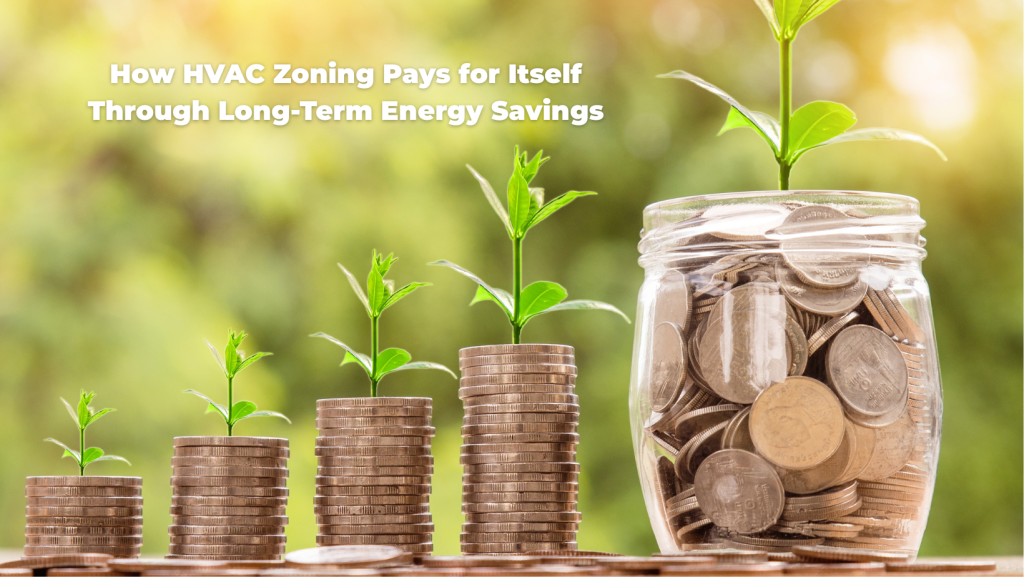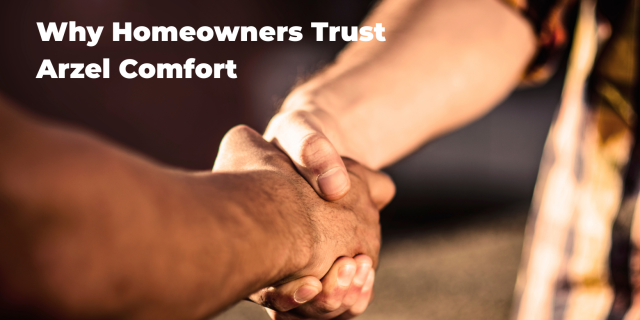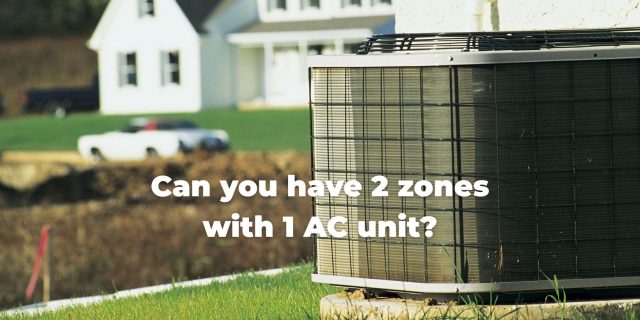
How HVAC Zoning Pays for Itself in Long-Term Energy Savings

Everybody needs to heat and cool their home, and no one likes to pay for it. Even so, most of us are wasting energy to make our homes comfortable. This guide to HVAC zoning will show you how to avoid this pitfall. At the same time, you’ll get better comfort in your home. Imagine lower energy bills and better home comfort. We’ll explain how HVAC zoning pays for itself. The only question left is why wouldn’t you get HVAC zoning in your home?
What is an HVAC zoning system?
You already have an HVAC (heating, ventilation, and air conditioning) system in your home. It’s probably a furnace and air conditioner, with ducts that carry warm or cold air throughout your home. Maybe you have a higher-tech heat pump system. You might even have something out of the ordinary, like a wood-burning stove. Whatever you have, HVAC zoning optimizes your existing heating and cooling equipment.
It starts with creating climate zones in your home. Your contractor will group together rooms that have the same comfort needs to create zones. For example, in many homes the first floor is zone 1, and the second floor is zone 2. Another common grouping puts the open-concept living area in zone 1, the main bedroom in zone 2, and then the other bedrooms in zone 3.
After you know what the zones will be, your contractor installs dampers in your ducts. The dampers will open when a zone needs heating or cooling, and close when the zone is comfortable. A thermostat in each zone will give you control over what you want the temperature to be in that zone.
How zoning helps you save energy and lower bills
Okay, so these climate zones sound great, right? They will definitely give you more control over the temperature in different areas of your home. But how do they save energy? Well, there are a few different ways you can save energy with your zoning system. You can:
- Stop wasting energy to heat and cool rooms you’re not using
- Stop overheating or overcooling certain rooms
- Focus your air conditioner or furnace on the rooms that need it most
Stop wasting energy on rooms you’re not using
A zoned HVAC system is a powerful tool. It gives you much more control over the temperature in each room. One way you can use that control is to set back the temperature in areas you’re not using.
For example, you probably use your bedrooms at night and your living room during the day. With zoning, you can set the bedroom thermostat to a less comfortable temperature when you’re not going to be there. An hour before you go to bed, your thermostat kicks into gear and ensures your comfort for the night. The living room can follow the opposite schedule. When you’re asleep, your HVAC system doesn’t need to be working overtime to keep it comfortable. You can set the thermostat to start warming up or cooling down your living room an hour before you’re going to use it.
Using temperature setback is a fantastic way to save energy in your home, without sacrificing any comfort. Think of it like turning off a light switch. You probably turn off a light switch when you leave a room, because you don’t want to waste electricity lighting a room you’re not in. With zoning, you can do the same thing with your thermostat. And it’s actually even easier, because you can set a smart thermostat to remember your schedule. You won’t have to lift a finger!
Stop overheating and overcooling
Most homes have some problem areas when it comes to heating and cooling. The upstairs is probably too hot in the summer, for example. When you’re trying to sleep on a hot night, you might turn your thermostat down until you’re comfortable. But where is that thermostat located? Most likely on the first floor! So you have to turn it down to a frigid temperature just to keep the upstairs bearable.
The biggest problem here seems like the hot upstairs. And zoning will fix that! But don’t underestimate another issue: over-conditioning. Over-conditioning is what HVAC technicians call it when an area is getting too much heating or cooling. It’s a problem for two reasons:
- Over-conditioning makes you uncomfortable.
- Over-conditioning wastes energy while it makes you uncomfortable!
Zoning can solve this problem because it will divide the home into at least two zones. When the upstairs is too hot, the dampers in the ducts will close off the downstairs area. The air conditioner will send cool air only to the upstairs. This way, you’re not wasting cool air on the downstairs area that’s already comfortable. Additionally, the upstairs will get cool faster because it’s getting the full focus of your air conditioner. It’s a win-win!
Focus on the rooms that need it most
You probably don’t think too much about your heating and cooling equipment. When it’s working well, you likely can’t even see it. But it’s working behind the scenes, 24/7, to keep you comfortable. Did you know you can help it work smarter?
Without zoning, your furnace or air conditioner is working on the whole house at the same time. If it’s the right size for your space, it can keep up even on extreme temperature days. But it’s always doing a little bit extra. Sometimes a lot.
With zoning, your heating and cooling equipment can produce exactly the right amount of hot or cold air to keep you comfortable. Instead of wasting a lot of cold air on the way to the hot second floor, it will send all of that cold air directly to the second floor. The same thing will happen for any space that needs some extra attention. All of this means that your equipment is not running as much. That’s good for your energy bills, and the longevity of your equipment too.
HVAC zoning pays for itself
Adding zoning to your HVAC system is an investment. You’ll have to consider whether the cost is worth it for you. But keep in mind that HVAC zoning pays for itself with these amazing benefits:
- Zoning works with your existing HVAC system, and it’s much less expensive than a new system.
- Arzel systems are so long-lasting they come with a lifetime warranty.
- Zoning keeps you more comfortable in your home.
- HVAC zoning pays for itself through energy savings year after year.
If you’re ready to get a zoning estimate, find a local contractor.
Topics
- Energy Efficiency (17)
- Homeowner Tips (20)
- HVAC Zoning (25)
- Indoor Air Quality (2)
- Indoor Comfort (33)
- Uneven Temperatures (5)
Recent Posts
View AllYour heating and cooling system should create a comfortable home environment that you can depend on. Sometimes a standard HVAC system just doesn’t cut it. That’s where Arzel Comfort comes in. Our zoning systems work with your existing HVAC equipment to give you better comfort and control. But we go beyond just comfort. Homeowners trust […]
Everybody needs to heat and cool their home, and no one likes to pay for it. Even so, most of us are wasting energy to make our homes comfortable. This guide to HVAC zoning will show you how to avoid this pitfall. At the same time, you’ll get better comfort in your home. Imagine lower […]
Creating Multiple Comfort Zones with One AC Unit Can you have two zones with one AC unit? The answer is a resounding yes. With HVAC zoning, you can transform your home into multiple comfort zones, each tailored to your preferences. Instead of relying on a single thermostat to control the entire house, HVAC zoning uses […]
If you’re like most homeowners, you probably look for ways to save money on energy costs. Does HVAC zoning save money? We’ll explore that question here, so you’ll know what to expect if you decide to install HVAC zoning in your home. What Is HVAC Zoning? Let’s start with the basics. When you add zoning […]



